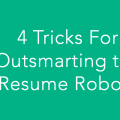When it comes to online job searching in 2016, the news is overall positive. However, if you are one of the 30 million Americans out of work or underemployed**, this isn't a reason to celebrate. **
In case you want to broaden your horizons and explore additional job opportunities, our guide to the best free job posting sites is a valuable resource.
We've all heard that networking is the number one job search strategy, with up to 80% of people obtaining jobs this way. Yet most job seekers still use online job boards as their primary job search strategy.
(Never mind that you're severely limiting your options if you do this).
If you're not willing to give up this method, pay attention to the do's and don'ts of online job searching in 2016:
Don't: Rely only on mega job boards
If you're using Indeed.com to job search, you're not alone. Indeed has 180 million unique visitors each month --- nearly double that of other job sites. It also offers 16 million job postings, with 8.2 jobs added each second. But numbers don't tell the entire story (for more information on the numbers and data behind recruiting, read this article).
Large, general job boards have become flooded and therefore more competitive and confusing for many job seekers. "Niche" job boards (which are smaller and industry-focused) are becoming more popular as employers are becoming more targeted in their search for the right candidate.
Do: Use "niche" job boards and LinkedIn
If you get the interviews you want through mega job boards, by all means, keep up the good work. If not, consider using niche job boards to identify jobs, and then use LinkedIn and other tools to engage your audience and make connections.
Don't: Assume you're getting through the Applicant Tracking Systems (ATS)
If you've received an automated response to a job you've applied for online, you've encountered an Applicant Tracking System (or "ATS"). These systems continue to evolve, and they aren't going away anytime soon. ATS have, for the most part, replaced paper applications all together, and employers increasingly rely on these systems. Unfortunately, they screen out many qualified applicants.
More bad news: in today's world, it's not just the ATS that you're up against, but a series of lengthy and sometimes invasive questions and/or personality assessments used to screen candidates. Sometimes, you may even be asked for your salary history, social security number, and contact information for your references -- all before a human being even reads your resume!
Join The Break Community
Do: Understand how ATS work, but avoid them if possible
Remember networking is the #1 job search strategy. Know that the more knowledge you have about a company and what they're looking for in a prospective candidate, the better off you're going to be.
Don't: Neglect Social Media
According to Jovite.com, 73% of recruiters have hired a candidate through social media. 93% of recruiters review a candidate's social profile before making a decision. Employers use social media to examine candidate profiles that possess a set of keywords that are associated with the employer's ideal candidate. On the job seeker's side - social media is great for the job seeker to gain insights into a company's culture.
Do: Use the social media tool(s) that work best for you
Job seekers who are "Linked In" to social media get information fastest in today's world. As a result, those with better access, networks, and social connections will continue to succeed. An up-to-date LinkedIn account is recommended for all active professional job seekers.
Sign up to automatically receive job-search tips via an email newsletter or social media. These technologies are easy ways to get useful information in an easily digestible format. They take less than five minutes a day to read and you'll quickly build up a useful storehouse of tips and strategies to enhance your search efforts.
Consider using
-
Meetup (www.meetup.com). This venue has lots of opportunities for professionals to market themselves and conduct informational interviews. Some companies are establishing Meetup groups as a strategy for cultivating and locating talent.
-
Google+ (www.google.com) has more users than LinkedIn and is predicted to grow in terms of sourcing candidates.
-
Twitter (www.twitter.com) is an underutilized job search tool that is quickly gaining headway.
Don't: Assume that face-to-face networking is dead
Referrals as a source of hire continue their upward trend. Recruiters indicate that over 60% of their best job candidates are found through referrals. Employers will conduct more "stealth searches" than ever before. A stealth search (known as the "Hidden Job Market") is when an employer doesn't post a job but is searching for qualified candidates to fill the position. This means that as a job seeker, you'll have better luck if you place yourself into your targeted employer's referral pools. This requires a more strategic and proactive approach to your job search.
Do: Have a targeted list of employers
Search their websites for positions and reach out to the decision makers directly.
Consider joining local associations in which your targeted decision makers hang out. Know that just joining isn't enough -- you need to become involved by volunteering or joining committees.
Job hunting continues to evolve.
Consider the current trends of niche job boards, social media, Applicant Tracking Systems, and becoming an employee referral and you'll boost your chances of landing a job this year.
Seeking professional guidance with your resume? Utilize a resume writing service to receive the help you require.
About the Author: Edythe Richards is a Career Counselor and founder of A Top Career. She specializes in helping mid-career adults find meaningful employment. Check out her podcasts and sign up for her monthly newsletter.













